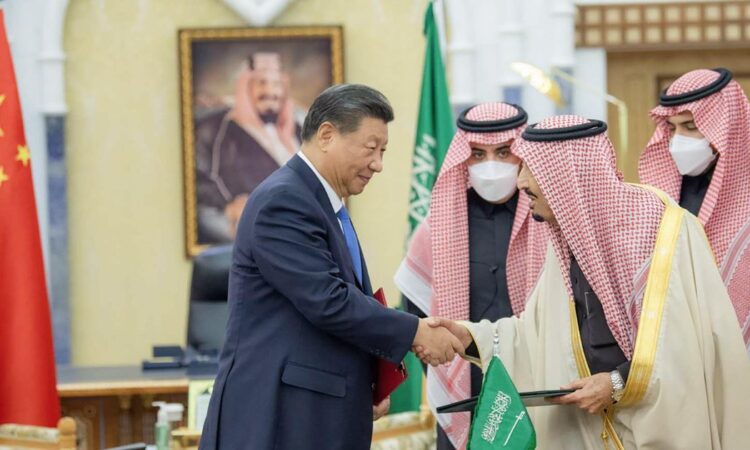
The system has wobbled on occasion, perhaps most dramatically in the 2008 global financial crisis. But historian Adam Tooze’s account of that crisis, ‘Crashed’, argues that the crisis demonstrated the power of the US, which was eventually able to stabilise the rest of the global economy via a system of ‘swaplines’ from the Federal Reserve. These offered very cheap dollars in an emergency to politically favoured countries like Britain, granting them a bailout of domestic financial institutions.
This gave the US huge weight – if you can choose to rescue someone, or not, you have immense power over them, as Tooze argues. Even the threat of removing emergency support can give you power. But it was that demonstration of power that helped sow the seeds for the system’s steady collapse, as we are seeing today.
Precisely because the US was able to exercise its monetary power in a way that matched its broader interests – so only its closest allies had access to swaplines, but every country could find itself in need of dollars, in an emergency – it has created incentives for other countries to withdraw, as far as is possible, from the dollar-centred international monetary system.
End of the dollar regime
Since 2008, other economies, led by China, have grown faster than the US, and some close US allies, like Britain, have fallen behind. Covid also dramatically jolted the whole system, and we’re still very much living with the virus and its consequences – in terms of health, disrupted supply chains, and the very substantial amounts of debt that lockdowns generated.
When the US unambiguously dominated the globe, as it did in the years after the end of the Cold War, being simultaneously the largest economy, the technological leader, and the greatest military power on the planet, there was little room or sense in making such a withdrawal. But as US power has waned in those different dimensions, the risks of a withdrawal from the system have also lessened for countries contemplating it.
On the other hand, the risks of remaining inside the dollar system – particularly if you are outside the US’s charmed circle of close allies – have also been raised dramatically higher by Russia’s invasion of Ukraine, and the subsequent imposition of sanctions on Russia. When the tanks rolled over the border almost a year ago, the reaction from the US and its allies was swift: Russia’s unimpeded access to the dollar payments system was unceremoniously blocked, just as Iran, earlier in the last decade had found itself barred.
This sudden restriction acted as a giant warning sign to every other country relying on the global dollar payments system, says Zoltan Poszar, the head of global strategy at Swiss bank Credit Suisse. If Russia could be excluded on the say-so of the US government, so could any country. Poszar thinks that in addition to the opportunity to withdraw from the system, created by the relative decline of the US compared to other great powers, the Russian invasion of Ukraine created the incentive to withdraw, so as to avoid a country potentially finding itself, in the future, exposed to the whims of Washington.
Poszar thinks that a new, multipolar international currency system is emerging, which he has labelled ‘Bretton Woods III’, referencing the idea that, since the end of the Second World War, the world has passed through three different international monetary systems. The first was designed at the Bretton Woods conference in the US in 1944, where the Allied powers tried to lay down the ground rules for how the post-war international monetary system would work. This agreement set up the World Bank and the International Monetary Fund, which are still with us, and a system of fixed currency exchange rates, pegged to the dollar (and then to gold), which is not: the system collapsed in the early 1970s when the US refused to maintain the dollar’s fixed price in gold any longer.



